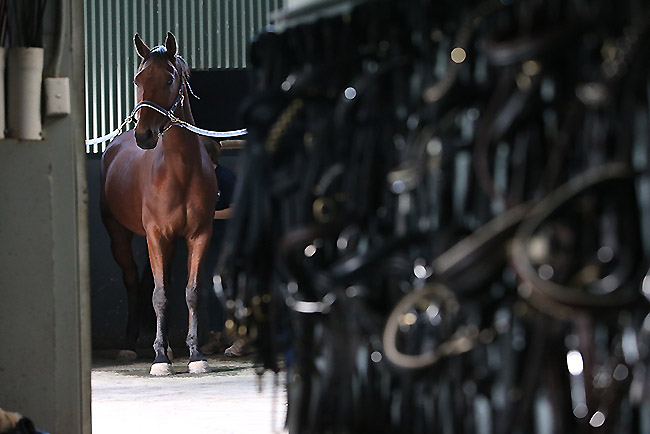
Your life could depend on it!
Some of the serious accidents in the lower levels of eventing and with less experienced riders come about when horses rush their cross-country fences, says Australia’s leading horse behaviourist, Andrew McLean, but according to Andrew, while it might take time and patience to solve the problem – you can solve it.
“I think in the lower levels, many horses accelerate in their last few strides and this can be deadly, in particular because the rush is achieved by lengthening the stride, quickening the tempo and flattening the back. When a horse lengthens in that last couple of strides, it not only blurs the take off point, but it also diminishes the chance of the horse getting underneath itself and jumping higher. When the horse lengthens his stride, he can only really jump long – and that increases the chance of catching the top of the fence, and this can be disastrous especially for upright fences or square oxers or any fence that isn’t a galloping-on style of fence (such as roll-tops and other, rounded top fences).”
“On top of it, the inconsistency of the rhythm approaching the fence where the take-off is random scares the horse, and so adds more motivation to rush; more fuel to the fire of rushing.”
“I think it is essential to impress upon the riders and coaches to make sure that the horses do have sufficient brakes and that shortening aids actually do work. And that means lots of transitions such as trot/halt/trot that are achieved in four or less steps. Any more than four steps of the forelegs is too long for a downward transition from trot to halt. When a rider can achieve this time-frame from light rein aids associated with position effects, his half-halts will work and the rider’s positon aids will have a stronger effect.”
“I think where a lot of riders get muddled is that they think when a horse rushes to the fence it is because he loves jumping. The truth is pretty well the opposite – if, when horses are learning to jump they hit the fence with their legs, which they often do, their response may be to either pick up their legs higher next time – or rush -, or both, and if the rider rides poorly and catches the horse in the mouth, that’s another cause of pain. The horse responds by going ‘ouch’ and going faster.”
“The next step in this process is that the horse sees the jump as a trigger for the event of rushing, and now you’ve got a horse that as soon as it sees a jump, it rushes. That is very common, I see it in my work all around the world, wherever I teach.”
How to solve the problem follows
Solving the problem…
“I go back to a cross rail – the rushing horse definitely will accelerate towards a cross rail – and I approach it at a trot. I mark a line in the sand, six metres on the landing side of the cross rail – that is a reasonable distance for the horse to be able to halt. But because he is rushing, he is going to launch himself over the cross rail and it will take many more metres to actually halt. The horse that rushes has learned that the landing side is totally in the horse’s control – whereas we want to control the speed as soon as the horse’s legs have touched ground. The moment those feet are on the ground, he should be yours. You should be able to say slow, or turn, or stop or whatever.”

Jumping long from speed increases the chance of catching a rail and this can be disastrous
“What I do is repeat and repeat and repeat and gradually get the horse to stop earlier and earlier – my goal is for his forelegs to stop on the six metre line. In the beginning he will probably stop in ten metres. After a few repetitions, he will stop at nine, then eight, then seven, and when you can get him to stop at six, he changes quite at lot at that point. He starts to anticipate that the reins do have some control, and he starts to be able to be slowed, he starts to be more with the rider, and calmer, and he jumps more correctly. He starts to jump up through his wither, rather than jumping hollow, which is what horses do when they rush – and that ruins so many aspects of their jumping….”
Here the horse lengthens his stride, and he can only really jump long
“You want him to come to the cross rail at a trot, jump over the cross rail, which is a canter stride, close your fingers on the reins, and by six metres every horse should be able to smoothly come to a halt with his forelegs on the six metre line.”
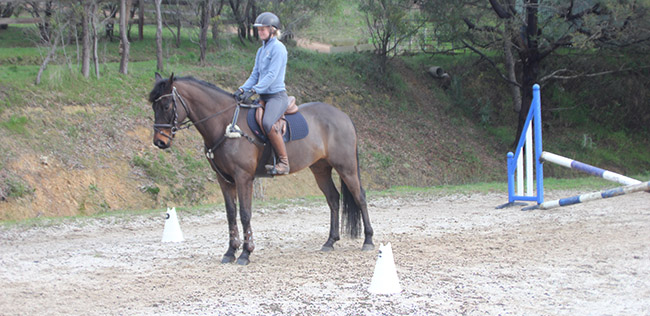
“If I do it in canter, just a normal working canter, I would expect him to be able to stop smoothly in eight metres.”
“Once I’ve done that, because the horse is a context-specific learner, it only works over that particular fence, with the characteristics of that particular obstacle. So now I do it also from the other side of that obstacle, and then I do the exercise with all the other jumps in the training arena, reduced to simple cross- rails. It makes the re-training process quite a long one. However the tendency to run is related to the flight response, with a high coefficient of learning, so it is deeply embedded. Nonetheless you can re-train it, it just takes time.”
“What is important is that if you change any variable, always think to just change one variable at a time. If you change two at the same time, the result is not as good. The variables are the gait, or the shape of the obstacle, or the colour of it (dark/light). If you change two variables at the same time, the horse is more likely to rush. The re-training process is about breaking things down to simple variables, then gradually building them up and starting to mix them up.”

“To do this properly will probably take two or three weeks. It needs to be a regular event. In my clinical work, I just give the riders or coaches homework and try to implore them to be very prescriptive about their training. I explain to them, if you mess this up, you will just be back to square one.”

“It is still not uncommon to hear of people being told to ride the rushing horse into a wall, thinking that this is going to teach the horse to have a rhythm by some bizarre form of punishment. The logic of this is baffling, as it does not and cannot teach the horse anything about the aids that have failed.”
“It is all well and good to tell riders to just use their seat or body position, but the truth is that every jumping rider has reins in their hands, and reins are the only means by which you can in some measure, enforce, for safety reasons also, the horse to slow. The seat and position can only beg or politely ask for the response to occur, they cannot make it occur. In fact the seat and position effects are derived from the working of the pressure-release effects of rein and leg aids. Our research with rein tension gauges and seat pressure mats shows that when riders believe that they are only using their seat for slowing, there is nonetheless a very clear and measurable spike in rein pressure with every downward transition seat aid. So we need to keep our rein effects smooth, subtle and polished.”
“And of course you can arrange poles on either side to prevent rushing, however ultimately, the horse should be trained to respond to the aids. And for me that’s it. Exercises are great for various other training reasons, but they don’t teach the aids. They may alter the horse’s response to that obstacle but then you will need to do this exercise for all obstacles. And still the half-halt won’t work…”
My goal is for his forelegs to stop on the six metre line
“There is also the thinking that you can fix problems like this with a more severe bit. I don’t think it solves the problems but it may make the horse more controllable. However reaching for the severe bit can be a slippery slope. It’s one of those exponential curves: by the time the horse’s mouth is so habituated to pressure that it needs the ultimate stronger bit, you can get to the point of being unable to stop him with any bit. I found that myself in the days when I used to take catch rides on horses with various cross-country issues, and when I’ve ridden various bolters in cross-country such as Kildalton Castle. I had to retrain his stop response before I could compete at Adelaide 2** in 1987, or I’d have killed myself.”
(Before he was an Equitation Science Guru, Andrew was a competitive eventer at the old Advanced level – and a member of the Australian eventing team in a Trans Tasman competition…)
“I care more about the way the rider uses his hands than the severity of the bit, of course within certain limits. I say this because an unskilled rider can ride in a thick snaffle and be very harsh, while a skilled rider can ride in a much thinner bit in a far more sensitive way. For me safety is vital for both horse and rider and using the right bit in the right way is essential.”
“My view is that we need to be constantly thinking about maintaining and polishing up the stop response to the lightest possible aids, say roughly 500 grams, because when you do that, then immediately all the other pressures above that (e.g. 600, 800 grams are) are available for volume control of slowing. Of course, the pressure of aids is relative to speed because of the analgesic effects of adrenaline.”
Is this issue hereditary driven – are there more rushing Thoroughbreds, and less rushing Warmbloods?
“Definitely. There is certainly a hereditary aspect to it. I know years ago when most the event horses were Thoroughbred, there were even certain lines which had tendencies to be hot and rush. Often it’s horses with not a very good jumping technique as well, because their solution is just to go faster because they can’t find a comfortable way to jump a fence when they take off deep to the fence.”
“Really the main factor is the rider. It is how many effective transitions the rider is practising that is crucial. That’s why we try to make sure that our work here is very much rider focused. I do a lot of work with trainers, so they are the ones that have to maintain the behaviour – that’s the most successful strategy, if the trainers keep it up.”
“Proficient jumping trainers know clearly what the rider’s jumping faults are – they are good at training the position of the rider and they get the tempo correct. That’s important because if the horse’s tempo coming into the fence is usually too slow, they will frequently learn to rush. The minimum canter tempo is 105 beats per minute per leg I’ve found, and if they are slower than that, they have difficulty jumping anything higher and wider than a metre. Yet inexperienced jumping riders often opt for a too slow tempo. Tempo is implicit in creating jumping power, so the too slow canter can lead to the horse hitting the fence, and then their answer may be to run faster or refuse.”
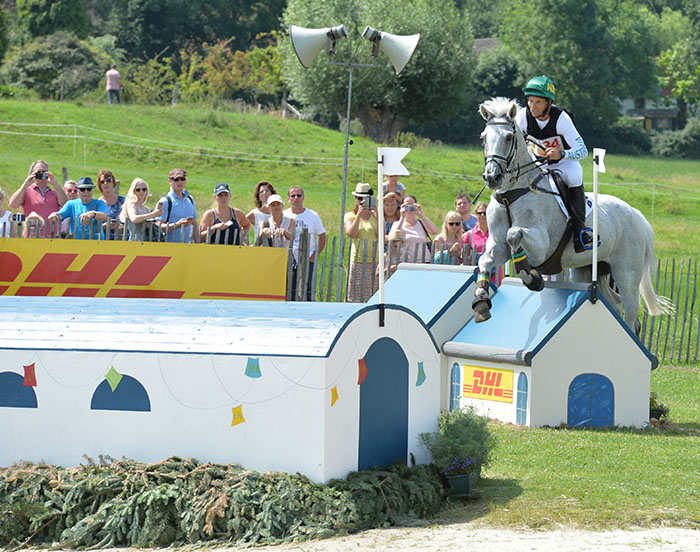
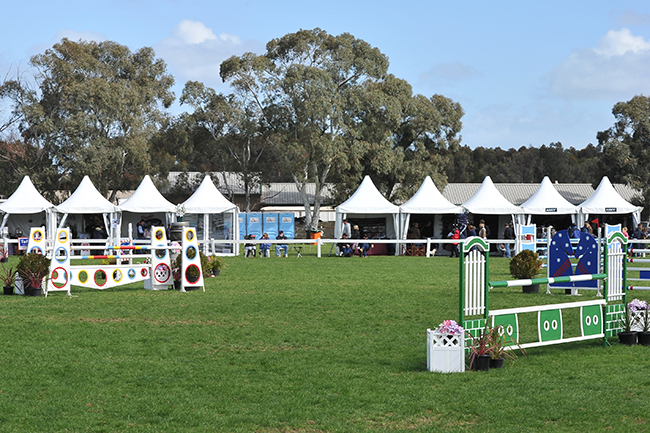
Okay they are doing it nicely at home, and then they take the horse to a competition where there are floats and lots of other horses, and all that buzz – can that unravel all that re-training?
“That’s definitely one of the contexts that needs to be considered when you are re-training. It is not a bad idea if you can go to training days where you can just downgrade the horse and go HC, and trot around over low cross rails, and get the horse controllable in the trot. The trot is so valuable compared to the canter because you’ve got so much more room to move in the trot. Because the trot step is half the length of the canter stride, you’ve got more variation in take-off point and the horse can learn his footwork and the rider can control and make adjustments of tempo or stride length. The horse can learn a lot in the trot.”
And less of an adrenaline rush at trot than canter…
“There is actually less adrenaline in the trot because it is slower. The faster you go, the more adrenaline in the horse’s system because his heart beat is faster. – training volume-control of tempo in the lower adrenaline state is very important as it lays the foundation for the effect of the aids in higher adrenaline states.”
“It is just a matter of gradually exposing the horse to more things. When you go to a competition, it may lead to a more adrenalised situation, and the main thing you can do in that situation is to always remember your downward transitions – if he is lazy that’s another problem, lots of upward transitions. It’s the transitions that train the horse not to be too ‘goey’ or lazy.”
“For a lot of riders, their warmup is just trotting endless circles with no transitions, whereas the most important part, especially for the eventing horse, is transitions. If you can do trot/halt transitions, in three or four steps of the forelegs, that means your half-halt is going to work. When his halts are good then his half-halts will work. You can come around a corner, and sit up a little, put your shoulders back, and raise hands a little, and that’s a sign to the horse to shorten, raise his forehand and sit on his hind end. Whereas the horse that has poor downward transitions tends to flatten and rush. Transitions within a maximum of four foreleg steps to halt is really essential. Ultimately you would want to be able to do it in two steps, and that is when you feel the horse sit, and you know his brakes are good. Then when you do your half halt, it will work. Your horse is going to jump better and be far safer.”
This article first appeared in the September 2016 issue of THM.
Want to breed a jumping horse?
Go to www.ihb.com.au and see them, plus all the representatives of the best European bloodlines. Stallions like Flic Flac or Qualito
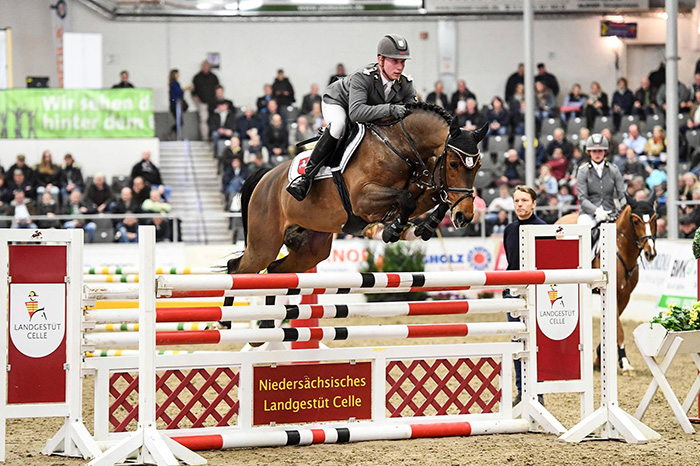
Flic Flac http://ihb.com.au/product/flic-flac/
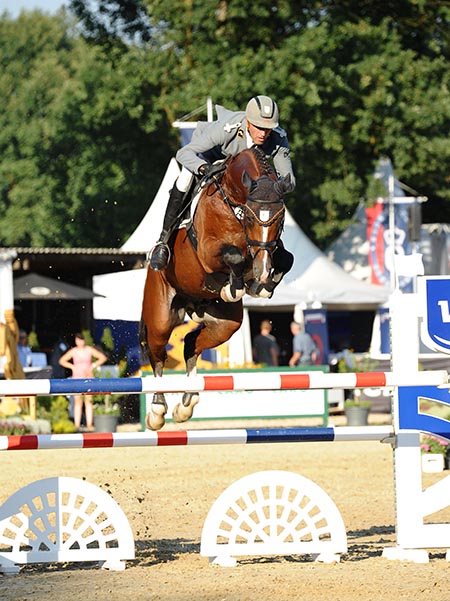
Qualito http://ihb.com.au/product/qualito/


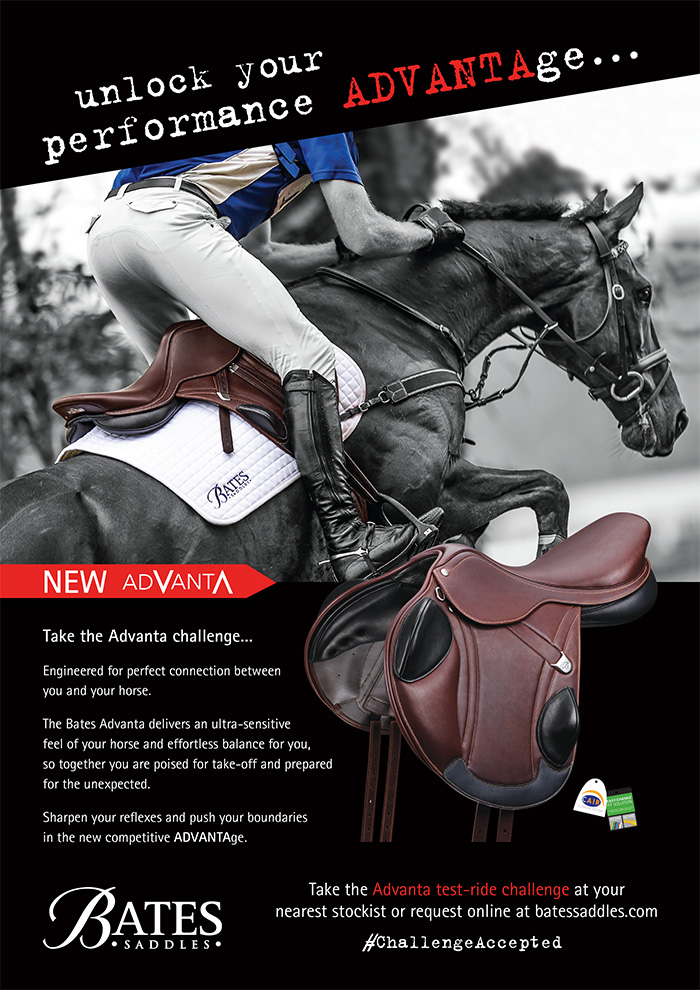
Thankyou for sharing this, have all the problems listed (plus a few other related ones) off to practise some trot-halt transitions right now!
Great article! Thanks.
Fantastic article, a must read especially for young riders.
Great article, just what l needed as Im re training a Saddler to jump,….apart from high head carriage and occasional tripling hes so enthusiastic at what ever he does. But l started from square one, circles when he rushes, bit-less riding. After four months of basics, hes amazing. Thank you once again.